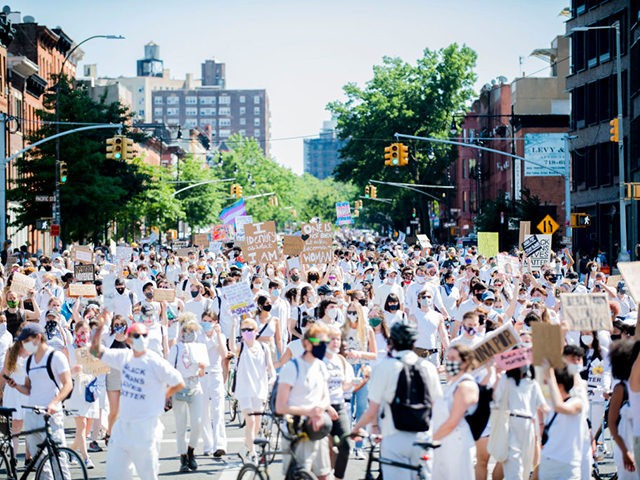The protests following the death of George Floyd sent many Americans into the streets despite advice or orders from public health officials to avoid mass gatherings. But they may have also encouraged even more Americans to stay home–preventing the protests from leading to a rise in coronavirus infections.
A study using cellphone data from Black Lives Matters protests in 315 of America’s largest cities found “strong evidence” that the protests increased social distancing behavior and “modest evidence” that this may have actually lowered the amount of coronavirus infections. In any case, they did not raise infections in the communities where they took place.
“Black Lives Matter Protests, Social Distancing, and COVID-19,” by economics professor Dhaval M. Dave of Bentley University and four other economists, looked at cellphone tracking data and data on the prevalence of coronavirus. The working paper was made available on the National Bureau of Economic Research’s website.
“While the protests themselves were large gatherings that do not match well with social distancing guidelines, the protesting population is not the only one that may have a behavioral response,” the economists write. “For example, other individuals who did not wish to participate in the protests, perhaps due to fear of violence from police clashes or general unrest, may have chosen to avoid public spaces while protests were underway.”
The more violent the protests were, the greater the effect, suggesting that it was indeed avoidance of protests that was driving up social distancing.
“This effect was not fully explained by the imposition of city curfews. Estimated effects were generally larger for persistent protests and those accompanied by media reports of violence,” the economists write.
Despite the fact that the protests did not raise the rate of coronavirus infections for the communities in which they took place, it is still possible that “The protests caused an increase in the spread of COVID-19 among those who attended the protests,” according to the economists. It is just that their number would have been overwhelmed by the lower amount of infections in those avoiding public spaces during the protests.

COMMENTS
Please let us know if you're having issues with commenting.